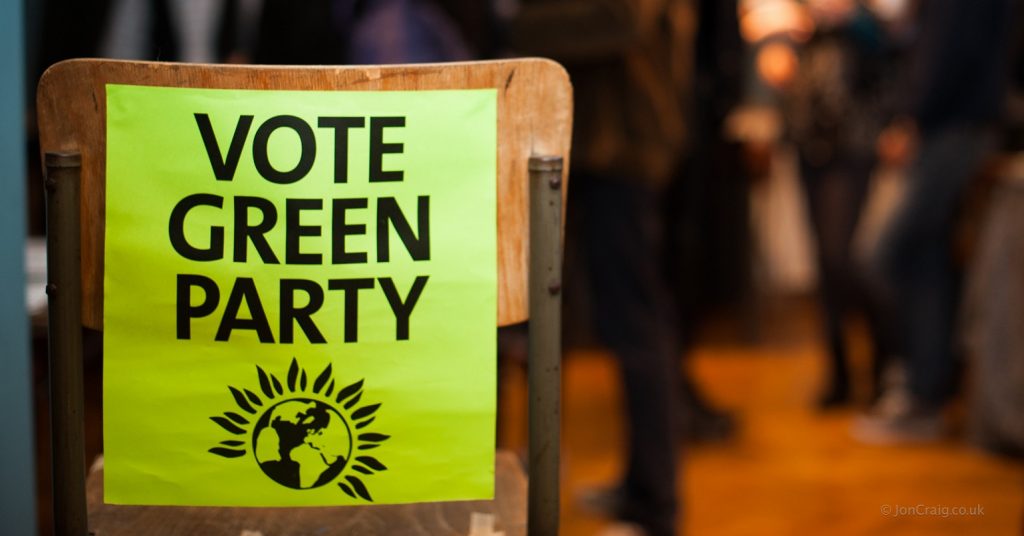What did the Green Wave in the European elections tell us?

Cautiously high hopes powered the campaigns of Greens across Europe in the European elections. Since October 2018, the world has seen a veritable explosion of environmental activism in the form of global Youth strikes, Extinction Rebellion protests and unprecedented success for the environmental movement’s party-political arm, the Green Parties.
More than 200 million Europeans in 28 countries cast their vote between 23rd and 26th May – with the highest turnout since 1994 (an average of 50%). Green-friendly countries such as Belgium and Luxembourg topped the turnout table with 89% and 84% respectively, boding well for the Greens.
And indeed, alongside the Liberals, who saw an even rise in support across the continent, the Greens were the main winners. The so-called ‘Green Wave’ reached the murky and turbulent waters of Europe, though not very evenly
Generally known for punching above its weight in terms of influence, the Green group in the European Parliament grouping is the Greens/EFA, which includes Green MEPs, regionalist parties such as the SNP, and Pirate Party MEPs. This group grew from 51 to 75 MEPs, 69 of which are Green Party MEPs. This has elevated the Greens from sixth most powerful group to fourth.
Western Europe’s a charm
The results revealed that environmentally minded parties reached into parts of Europe hitherto immune to their charms. Portugal elected its first Green MEP, from the PAN party (People-Animals-Nature). Portugal appears to have carved a place for itself in Europe as politically exceptional – it was the only country to deal with the economic crash by public investment, the only country without a strong far-right – and this time it also stood out amidst the continuing non-success faced by Greens in Southern Europe. Neither Greece, Italy, nor Malta returned any Green MEPs. Spain lost one of the two MEPs it had before – though kept its Catalonian Green Party MEP.
This reflects research that shows a lack of interest in the environment in southern Europe. EQUO, Spain’s Green party, however has a member of parliament and a solid national presence, often allying with left-wing populists Podemos, and it has succeeded in pushing the ruling social democrats into adopting green policies such as the ‘just transition’, the idea of transitioning to renewable and green industry in a just and equitable way that doesn’t disadvantage workers. Spain is one of the few countries whose social democratic party is making a comeback from a growing Europe-wide wilting of support for centre-left parties. Central and Eastern European Greens also had a tricky time, failing to gain a MEP or even losing one. Hungarian MEP Benedek Javor lost his seat. Polish Greens, who had high hopes because of their excellent candidate Milka Stepien and a recent swelling in ranks and confidence failed to return an MEP though this was partly due to the launch of a new party which overlapping politics.
Western Europe is where the Greens more than made up for this – as millions (many first-time voters) put their trust into eager Green parties. The Greens came second across Germany, beating the social democrats and tailing Angela’s Merkel CDU party closely. Since the election The German Greens have been polling at first place nationally on 27% – a globally unprecedented success for Greens. The German Greens’ unashamedly pro-refugee, pro-climate and left-wing campaign went down well with young people, especially combined with its track record on pragmatism and competence in local government.
Apart from Germany, the most important country in terms of political clout in Europe is France. Whilst Marine Le Pen’s newly named ‘National Rally’ came first, the French Greens doubled their number of MEPs from 6 to 12, topping the list for 18 to 34-year olds. Whilst President Emmanuel Macron made much of paying lip service to climate change at the start of mandate, his environmental credentials were dashed by the resignation of much-loved environmentalist Nicholas Hulot as environmental minister. All in all, an interesting result for a left-wing environmental party in a country with a fatally ailing social democratic party.
The Nordic Green parties similarly thrived – reflecting a recent and historical trend. Finland’s Greens are now the second biggest party and already having a positive impact after their splendid national election results earlier this year – and Norway’s Greens built on their recent success in local and national elections.
But the biggest surges were perhaps in the Atlantic Archipelago. Ireland’s Greens, who previously had no MEPs, received the most first preferences votes in Ireland and returned two MEPs, whilst the British Greens went from three to seven MEPs, electing an enthusiastic bunch of MEPs determined to make the most of their potentially very short terms. In a political climate and media landscape which excludes Green voices, these results far exceeded anyone’s expectations.
Reshuffling of European power
The Parliament looks different now – with the centre-right and centre-left heavyweights deprived of about 35 seats each and thus of the joint majority they have held since 1979. The European People’s Party (EPP), the centre-right Christian Democrat grouping which contains Merkel’s CDU party, remains the largest group with 182 seats, with the Socialists and Democrats (S&D) not far behind with 154.
The Liberal group Renew Europe (previously ALDE) is celebrating a promotion from distant fourth to strong third with 108. The Greens/EFA group has leapt up two places to fourth largest group with 75.
Just behind the Greens in fifth place with 73 seats is newly formed Identity and Democracy, the successor to the far-right Eurosceptic group, Europe of Freedom and Nations (ENF). The far-right did well across Europe – though not as well as many feared because of alarmist media – especially in France, Italy, Poland and Hungary. They will certainly be a powerful force.
The parliament is also slightly more representative in terms of gender – 40% up from 37% of its MEPs are women, an increased helped by the Green group – 40 out of the 75 Green MEPs are women. BME MEPs are also slightly more numerous – though Europe’s largest minority, the Roma, are still woefully underrepresented with just three MEPs.
European Greens’ priorities
The Greens will continue to work on their priorities – civil rights, social justice, environmental protection. Transforming ‘Fortress Europe’ and supporting migrant rights has also been a key focus – the new group has already supported the release of migrant rescue boat captain Carola Rackete in Italy.
One of their first moves, led by MEPs such as our very own Molly Scott Cato, was to require protection for the rainforest and indigenous people as a condition to vote for the EU-Mercosur agreement between the EU and Latin American countries such as Brazil, whose President Jair Bolsonaro is violating indigenous rights and cutting down the rainforest at an unprecedented rate.
A more conflicted and radical parliament will therefore lead Europe in the next 5 years. This is not necessarily a bad thing, especially if those who have held power unthinkingly for years are held accountable within a parliament that more faithfully represents the millions of Europeans whose future lies within the shiny hemicycle.
This article is based on a Big Green Politics Podcast episode, which you can listen to here or wherever you get your podcasts.
Editor’s note: This article initially claimed that there was only one Roma MEP elected to the European Parliament in 2019. It was corrected at 13:08 7/7/2019 to state three Roma MEPs were elected.



Dear Julia, please revise the article to note that 3 Roma MEPs were elected in 2019: Livia Jaroka, Hungary; Peter Pollack, Slovakia; Romeo Franz, Germany. . See https://euobserver.com/tickers/145043
Thanks for this Violeta. I’ll update.
So sorry Violeta, I wrote this when I was offline and forgot to check this when I was back online. Thank you for the correction 🙂